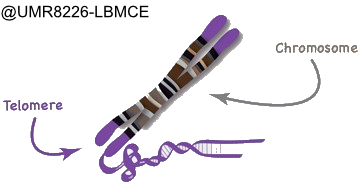“Replicative senescence-associated oxidative stress and Hog1 activation in telomerase negative Saccharomyces cerevisiae cells”
directed by Dr Teresa Teixeira and Dr Aurélia Barascu.
The defense will be held at the Institute of Physico-Chemical Biology (IBPC) on December 8 at 2 p.m., at 13 rue Pierre et Marie Curie at the Edmond de Rothschild library.
Abstract:
Replicative senescence, the process by which cells cease to divide after a certain number of divisions, is triggered by a DNA damage response, resulting from telomeres shortening during each cellular division. Data obtained in different organisms show that mitochondrial dysfunctions and oxidative stress are features of replicative senescence. Yet, the production and regulation of reactive oxygen species (ROS) levels during replicative senescence in budding yeast are still elusive. The aim of my PhD was to quantify ROS levels during replicative senescence and delineate the pathways linking telomerase inactivation with changes in oxidative stress levels using Saccharomyces cerevisiae as a model organism. I demonstrated that oxidative stress increases during replicative senescence in budding yeast. The ortholog of the MAPK p38, Hog1, becomes activated during replicative senescence through its canonical MAPKK Pbs2 and seems to contributes to ROS detoxification. My results suggest that Hog1’s action is independent of Mec1, the major DNA damage checkpoint protein in budding yeast, which also seems to counteracts ROS increase. Hog1 also likely functions independently of the telomeric long non-coding RNA TERRA. Moreover, I established the role of Hog1 in maintaining telomere length homeostasis and showed that the absence of Hog1 results in a marked cell mortality even in unchallenged conditions. Furthermore, my research revealed that autophagic processes do not impact replicative senescence onset in budding yeast. Collectively, data obtained during my thesis highlight that oxidative stress is a hallmark of replicative senescence in budding yeast and that Hog1 regulates telomeres homeostasis contributing to the link between telomeres and the ROS metabolism.
The members of my jury will be :
Pr Anabelle Decottignies Institut de Duve – Belgique Rapportrice
Pr Pascal Chartrand Université de Montréal – Canada Rapporteur
Pr Frédéric Devaux Sorbonne Université Examinateur
Dr Léon Sébastien Institut Jacques Monod Examinateur

